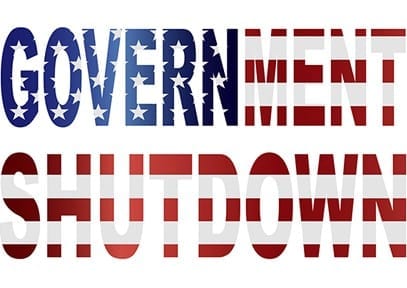
Oct
11
The Government Shut Down, The Debt Ceiling and What it Means
We’ve been hearing a lot about the government shut down, the debt ceiling and how this will affect us personally and professionally. But do we really understand the consequences of these momentous events? Before we go any farther, let’s look at the issues themselves and how we got to where we are.
The US Government’s Fiscal Year runs from the beginning of October to the end of September. Each year a new budget must be in place before the New Fiscal Year, for the government to move forward. On July 31, 2012, a tentative deal was announced to fund the government from October 2012 through March 2013 through a continuing resolution, with spending rates slightly higher than the FY (Fiscal Year) 2012 levels. The spending bill for the remainder of the fiscal year, the Consolidated and Further Continuing Appropriations Act, 2013, was passed, and signed by President Obama on March 26, 2013. That got us to where we are now with respect to the yearly budget. Since then the House, Senate and White House have been at odds over President Obama’s Health Care Plan, which was signed into law by the President in 2010. Certain Congressmen, who are holding the House hostage with their demands that Obama Care be gutted before they will agree on any budget, are meeting opposition from the Senate and the White House. Since none of the factions can agree, the government is at a stalemate. On October 1st the government officially shut down, at least in part. Certain vital agencies have been working, albeit not at full steam, trying to meet the needs of those they serve. Unfortunately this left many government employees on furlough.
Now let’s tackle the Debt Ceiling issue. So, what is the Debt Ceiling anyway? This is the cap set by Congress on how much the government can borrow in order to pay its bills and run the government. Federal debt is the amount of money the government currently owes for spending on payments such as Social Security, Medicare benefits, military salaries, and interest on the national debt and tax refunds to name a few. If the US doesn’t raise the debt ceiling, the government will be forced to cut spending which will destroy the economic recovery. We will be in default of our monetary obligations and, not only lose our credibility world-wide, but our rating will be downgraded making it harder to borrow money in the future. A worst case scenario could lead to global repercussions. That likelihood is slim at the moment as, even now, the GOP is set to meet with the President with an offer of a temporary raise in the debt ceiling.
Let’s take a moment to clarify an issue that may be confusing…the federal budget and the debt ceiling are two distinct entities. Congress could come up with a budget for the new fiscal year and we could jump start our ailing government, but without a rise in the debt ceiling we could not pay our debts. On the other hand an increase in the debt ceiling would allow the US to pay its bills, but the government would still be operating at half-mast. Obviously, what the country needs is for our Congresspersons to come together and pass both a fiscal budget for 2014 and agree to raise the debt ceiling. As mentioned before, things may be looking up. The GOP and the White House are meeting later today.
Stay tuned for further developments…
Related articles


 As shutdown continues, the debt ceiling looms
As shutdown continues, the debt ceiling looms